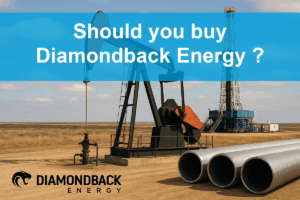1️⃣ Introduction — Context and Key Issue
The uranium market is poised for significant transformation as global demand for nuclear energy is anticipated to surge through 2040, driven by climate objectives and energy security concerns. In light of geopolitical instability and a renewed focus on sustainable energy, this trend becomes urgent.

2️⃣ Key Facts — Summary of Recent Developments
– 🟩 Global Economy: Current uranium consumption is roughly 160-170 million pounds annually, with projections showing demand could rise to between 390 million and 530 million pounds by 2040.
– 🟦 Regional Focus:
– China aims to expand its nuclear capacity from 57 GWe to 150 GWe by 2030 and 300 GWe by 2060.
– India plans to increase its capacity from 7.5 GWe to 100 GWe by 2047.
– Morocco is entering uranium production, leveraging its phosphate deposits and aiming to enhance energy sovereignty.
– 🟨 Sectors or Financial Markets: Cameco and Uranium Energy Corp have recently shown strong stock performance, indicating confidence in the market’s future, while prices range between $80-90 per pound, with greenfield projects needing prices above $100 to incentivize investment.
3️⃣ Analysis and Interpretation
The rising demand for uranium reflects a strategic pivot towards nuclear energy as a reliable and low-carbon power source. Political backing, particularly in the U.S., signals a significant shift towards recognizing the importance of nuclear energy in achieving climate targets. Technology companies, such as Microsoft, entering the nuclear realm could disrupt fuel procurement, traditionally dominated by utilities. However, supply chain bottlenecks — including mining, conversion, and enrichment capacities — present critical challenges, limiting immediate production expansion despite bullish demand predictions.
4️⃣ Market Impact
– Equities: Companies like Cameco and Uranium Energy Corp are benefiting from heightened investor interest, as their stock performance indicates positive market sentiment.
– Currencies: The demand for uranium could further strengthen the currencies of countries with large reserves as they position themselves as key suppliers.
– Commodities: The potential for price increases, necessitating prices above $100 per pound, will likely reshape investment landscapes.
– Rates: As uranium equities thrive, bond markets may observe increased interest among investors, impacting yields based on inflationary expectations tied to energy prices.
5️⃣ Scenarios or Outlook
🎯 Base scenario: Continued growth in global nuclear capacity, leading to sustained uranium demand and higher prices.
⚠️ Alternative scenario: Geopolitical tensions disrupt existing supply chains, accelerating the shift to new suppliers like Morocco, impacting availability in traditional markets.
🚀 Optimistic scenario: A surge in technology companies’ investments in nuclear energy leads to accelerated development and efficiency gains in uranium production processes.
6️⃣ Conclusion — Final Takeaway
As the uranium market approaches a climactic shift driven by demand and emerging producers, market participants must navigate potential risks and opportunities. The emphasis on strategic energy solutions underscores the critical role of nuclear energy in the global energy transition dynamics. The evolving landscape invites vigilance as stakeholders position themselves for prospective growth in an increasingly complex market.
Sources
https://discoveryalert.com.au/news/nuclear-renaissance-uranium-market-2025/
https://www.investors.com/research/cameco-stock-ccj/
https://northafricapost.com/91494-morocco-to-join-worlds-uranium-producers-club.html
https://simplywall.st/stocks/us/energy/nysemkt-uec/uranium-energy/news/uranium-energy-uec-rises-123-after-204m-equity-raise-to-fund



